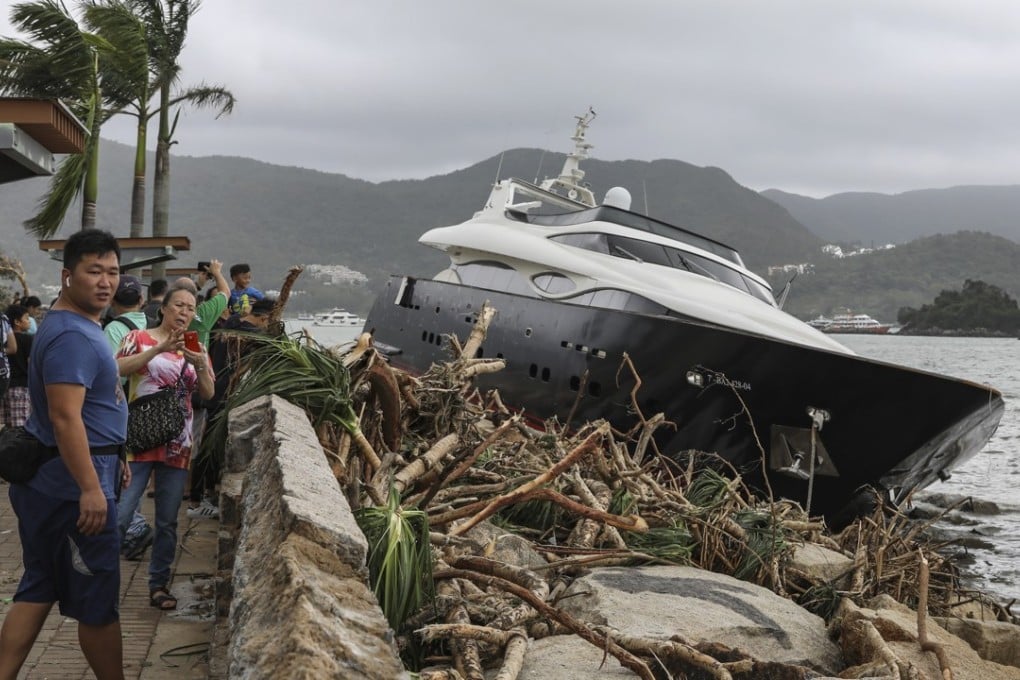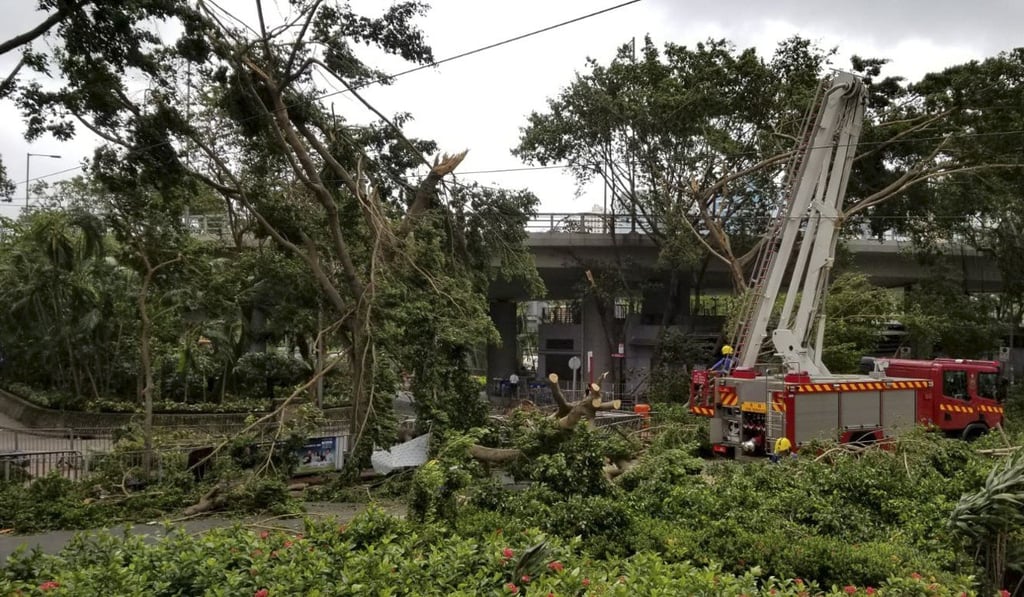Typhoon Mangkhut officially Hong Kong’s most intense storm since records began
Hong Kong Observatory said sustained winds reached 250km/h, while security minister John Lee calls damage to city ‘serious and extensive’

The most intense storm in Hong Kong’s history caused a record storm surge, uprooted some 1,500 trees, and left hundreds of windows smashed all over the city, officials said on Monday.
As the long process of recovering from Typhoon Mangkhut began in earnest, Secretary for Security John Lee Ka-chiu called the damage “serious and extensive”, and said the number of calls for help, or reports of injury, was as much as five times higher than when Typhoon Hato battered Hong Kong in August last year.
The Hong Kong Observatory said the intensity of the storm, which required a typhoon signal No 10 to stay in place for 10 hours, was the most powerful since records began in 1946.
“The initial analysis showed that, throughout the life cycle of Mangkhut, the maximum sustained winds near the centre once reached 250 kilometres per hour,” Li Ping-wah, a senior science officer, said.
The Observatory’s track information showed the record-breaking wind speed was recorded at 2am on Saturday, when Mangkhut had made landfall in the northern Luzon region of the Philippines.

By the time the storm reached Hong Kong, the wind had dropped to 175km/h (109mph).